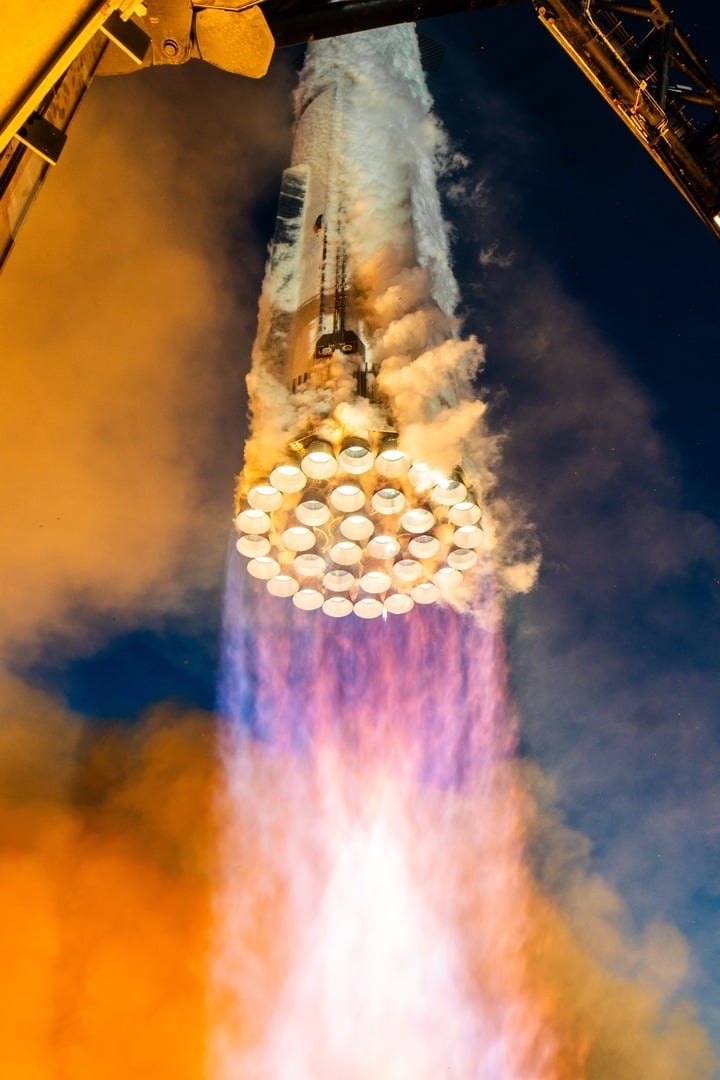After successfully launching the Starship rocket on its sixth test, SpaceX posted photos showing off the power of the Raptor engines – the giant "fire dragons" that propel the 122-meter structure into space.
“ 33 Raptor engines propelling Super Heavy lift off from Starbase ,” SpaceX wrote on the X platform.
SpaceX boss Elon Musk also shared the photos on his own X account on November 20, adding, " Each rocket engine produces twice the thrust of all four engines on a Boeing 747, and there are 33 of them ."

33 Raptor rockets eject purple flames, propelling the 122-meter-tall Starship system into space. (Photo: SpaceX)
33 Raptor engines are attached to the Starship's Super Heavy first stage, generating 17 million pounds of thrust at launch, making it the most powerful rocket ever to take off.
The thrust generated is nearly double that of NASA’s new Space Launch System (SLS) rocket, which is expected to fly for the first time in 2022. It is also more than twice as powerful as the Saturn V rocket, which generated about 3,447 tons of thrust during the launches that took Apollo astronauts to the moon more than 50 years ago.
SpaceX's work doesn't stop there, however, as there are plans to increase the power of the Raptor engines, to the point where the Super Heavy stage can produce an incredible thrust of up to around 10,400 tons.
The increased power would significantly improve Starship’s ability to carry heavier payloads on future missions to the Moon and possibly even Mars. It would also dramatically improve the rocket’s overall launch efficiency, as the increased thrust would minimize the loss of gravity during launch. Most of the rocket’s power would be used to accelerate rather than fight gravity.
Notably, this extra power could also pave the way for Starship variants that are even larger than the current version being tested.
In short, improvements to Starship's Raptor engine have the potential to help SpaceX achieve goals such as reducing launch costs, increasing payload capacity, and improving overall launch system performance.
Source





















































![[Maritime News] More than 80% of global container shipping capacity is in the hands of MSC and major shipping alliances](https://vphoto.vietnam.vn/thumb/402x226/vietnam/resource/IMAGE/2025/7/16/6b4d586c984b4cbf8c5680352b9eaeb0)













































Comment (0)